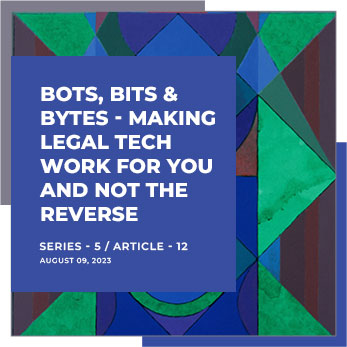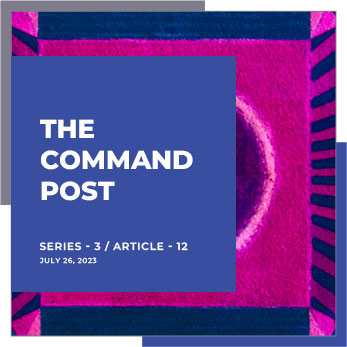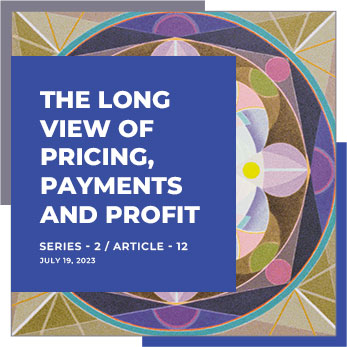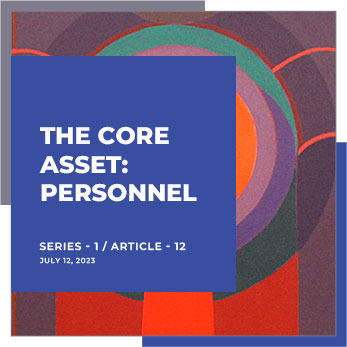First, there were cryptocurrencies; those algorithm-based, blockchain-technology-created coins which, after a while, people generally got the gist of and started buying up like hotcakes, often becoming ‘Bitcoin Billionaires’ overnight.
But now, blockchain technology has been applied to a new type of asset—the Non-Fungible Token (NFT)—which is becoming the ‘next-big-thing’ in art, gaming, AI creations, asset storage, and beyond. But the only problem with NFTs is that hardly anybody understands what they are!
The Uniqueness of ONE
Most lawyers have a pretty good idea of what ‘fungible’ means: an item that can always be exchanged for another one of its kind because they are all of equal value. Examples that immediately come to mind are a gallon of gas, a bushel of wheat, a U.S. dollar, and yes, even a cryptocurrency coin.
But what about items that are so unique that, other than the original, not a single one of equal value exists anywhere in the world? What that describes are ‘non-fungible’ items, and within that category are such physical items as diamonds (no two of the exact same combination of color, cut, or quality exist) or that American favorite—certain one-of-a-kind collector baseball cards. These, of course, are items you can hold in your hand to admire. But now, in the world of art, gaming, creative design, and data accumulation, there exists the possibility of owning the value of a unique asset without owning its physicality—because oftentimes, there is none. The asset may or may not exist outside of a virtual world, but its value is owned as an NFT. In other words, the NFT of a work of art is a token that represents a real-world physical artwork.
But if Millions Can See It….
A well-known digital artist named “Beeple” created an NFT representing a composite of 5,000 drawings, “EVERYDAYS: The First 5000 Days,” whose images anyone can view for free online. So, ‘why’, you may ask, ‘would a collector pay a whopping £50 million (almost $68 million USD) at a Christie’s auction to buy the “Beeple” NFT?’ Simply because, as with any valuable collector’s item, the buyer now owns the original. Not only that, but his NFT has proof of its authenticity built in, and, his ownership is irrefutable: his ownership exists on a blockchain ledger the same as his cryptocurrencies.
The emerging world of strictly digital existence has resulted in such virtual environments as Second Life® and CryptoKitties® where ‘residents’ can breed rabbits, cats, and other animals, offer them for sale, buy a plot of land, and build a house, all within the confines of a blockchain ledger. The unique cats each bear a distinct ‘digital genome’, with one such feline selling for $120,000.
Applying Virtual NFT to the Real World
So, if you don’t collect virtual art or tokenized digital animals, where does NFT fit in? The unique identifier, the NFT token, can also be applied to strict security measures. In today’s environment of airline security, for example, you cannot simply pass your airline ticket on to someone else because although you may be able to hold in your hand the paper that represents your interest in the ticket, its true value lies not in the physical ticket but rather in the digital asset that it represents, and that asset is non-fungible, not capable of being traded to anyone else or of value to anyone else.
Tokenizing Data
It is widely accepted across all business, social, scientific, and even political domains that there is tremendous value in treating data as an asset. One obstacle, however, is mining the value of that data by way of access and/or exchange. Many enterprises are aware of the value of their (and others’) data and data analytics, but the problem they face is the risk of sharing or just transferring that data. In other words, like one who owns an oil well, the asset can be extracted, but transporting it to the point of use requires different technology.
By applying NFT tokenizing to data and data analytics, the owner of the asset can protect the asset and ensure its authenticity at the same time. As with cryptocurrencies, blockchain-based ‘enterprise NFTs’ solve the authentication and security problems by storing all data on the same type of blockchain ledger, allowing it to be accessed and transferred in a trusted environment. Everything from financial instruments, to real estate title and encumbrances, to assets—digital or not—put up as collateral in secured transactions can be NFT tokenized to protect those relying on their immutability.
Formulation of NFT Standards
In the course of creating CryptoKitties, an Ethereum Standard was developed specifically for NFTs on the Ethereum platform. Initially designated ‘Ethereum Implementation Proposal 721’, in 2018, it was adopted as Ethereum Standard ERC-721. Based on that standard, a structure of innovative rules, libraries, and conventions for digital blockchain certificates are emerging. With such standards in place, businesses are likely to feel even more secure in utilizing NFT technology, aided by evolving Distributed Applications (DAPPS), also known as Decentralized Applications. In addition, stored assets can now achieve the status of ‘Store of Value (SoV), being a commodity, currency, or any other asset whose integrity and value are maintained without depreciating.
At the same time as the industry develops its protocols and regimens, not far behind, of course, are the regulators, eager to make sure that anything and everything of value is properly traced, tracked, and ultimately taxed. That is one aspect of NFT that virtually everyone can understand!
“PARALEGALS ARE OFTEN HIRED FOR INTENSIVE SUPPORT ROLES WITHIN AN ATTORNEY’S CASELOAD….
…A WIDE RANGE OF TRULY SUBSTANTIVE LEGAL WORK CAN NOW BE LAWFULLY ASSIGNED TO A PARALEGAL”
Executive Summary
The Issue
How to ensure authenticity and immutable ownership of digitally stored assets and collectibles.
The Gravamen
Data and data analytics are only truly valuable if they can be exchanged and securely transported to others without fear of compromise, alteration, or loss of uniqueness to the owner.
The Path Forward
By utilizing NFT tokenizing, enterprises can further exploit and monetize the vast data resources at their disposal and guarantee that the assets of others, whether being reviewed as to financial stability or set aside as collateral, are what they are represented to be.
Action Items
1. Analyze Your Needs:
Conduct a review of your enterprise assets, both physical and virtual, and determine what risks exist as to their security and proofs-of-ownership. This asset review can include everything from inventory to real estate, to collateralized equipment, and stored data, as well as any other asset against which an adverse claim could be asserted.
2. Enterprise NFT Feasibility Study:
Work with a blockchain expert to evaluate how enterprise NFT tokenizing can further secure your company’s or profession’s assets, and for which assets is enterprise NFT most appropriate.
3. Consider the Potential:
The NFT market is still nascent with a value of $2.5 billion but offers huge potential for growth. In the first quarter of 2021, the NFT market grew by an extraordinary 2100%, and many investors believe that NFT will be the next Bitcoin.
4. Peek at the Competition:
As with any industry game-changers, investigate how your competitors relate to NFT, with an eye towards avoiding being a ‘late or latent’ adopter of a technology that may very well dominate your business world.
Further Readings
- https://www.forbes.com/uk/advisor/investing/nft-non-fungible-token/
- https://www.theverge.com/22310188/nft-explainer-what-is-blockchain-crypto-art-faq
- https://www.paconsulting.com/insights/blockchain-fungibility-future/
- https://www.weforum.org/agenda/2021/09/if-data-is-the-new-oil-then-enterprise-nfts-are- the-tankers/
- https://appliedblockchain.com/physical-nfts
- https://blockgeeks.com/guides/dapps/







